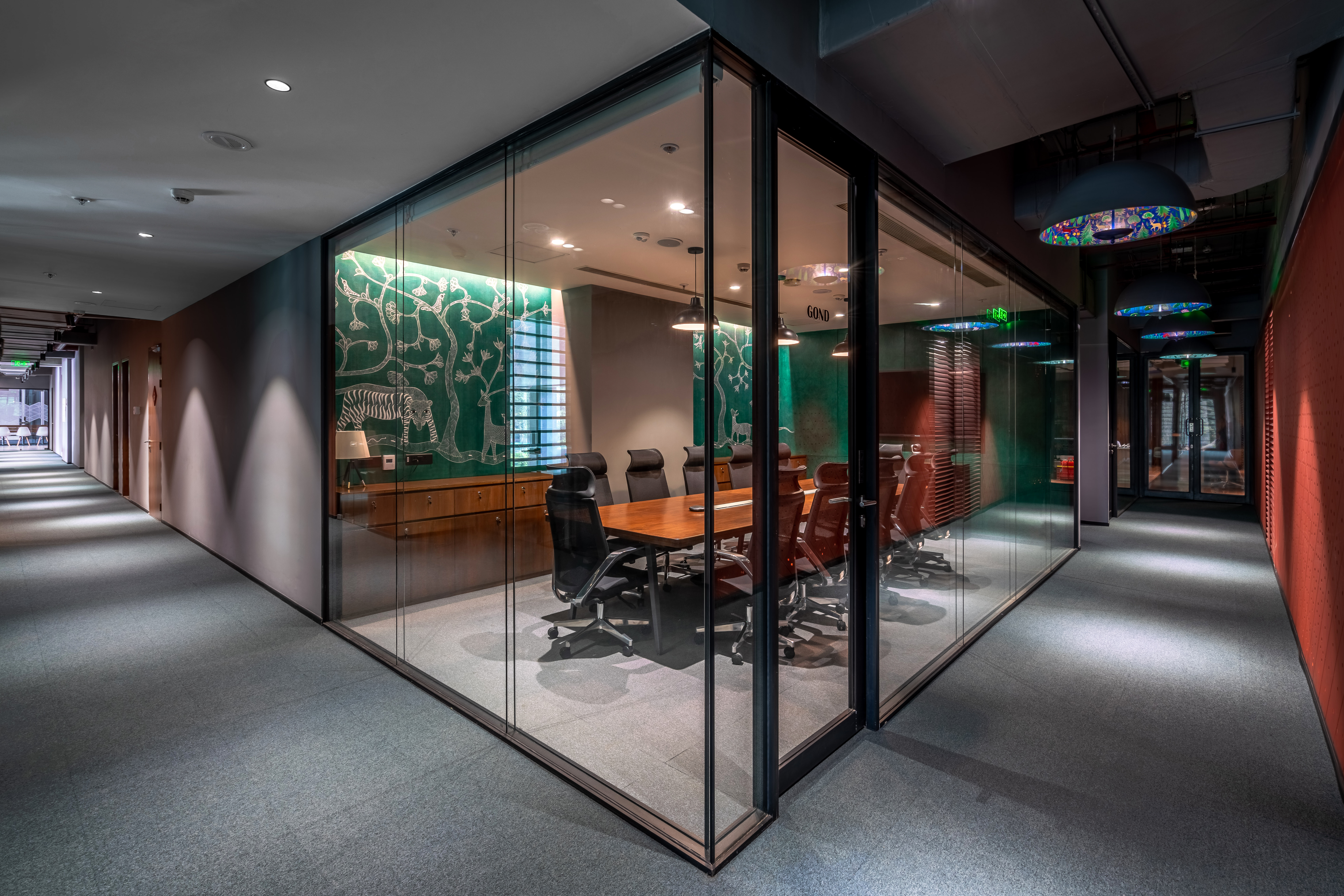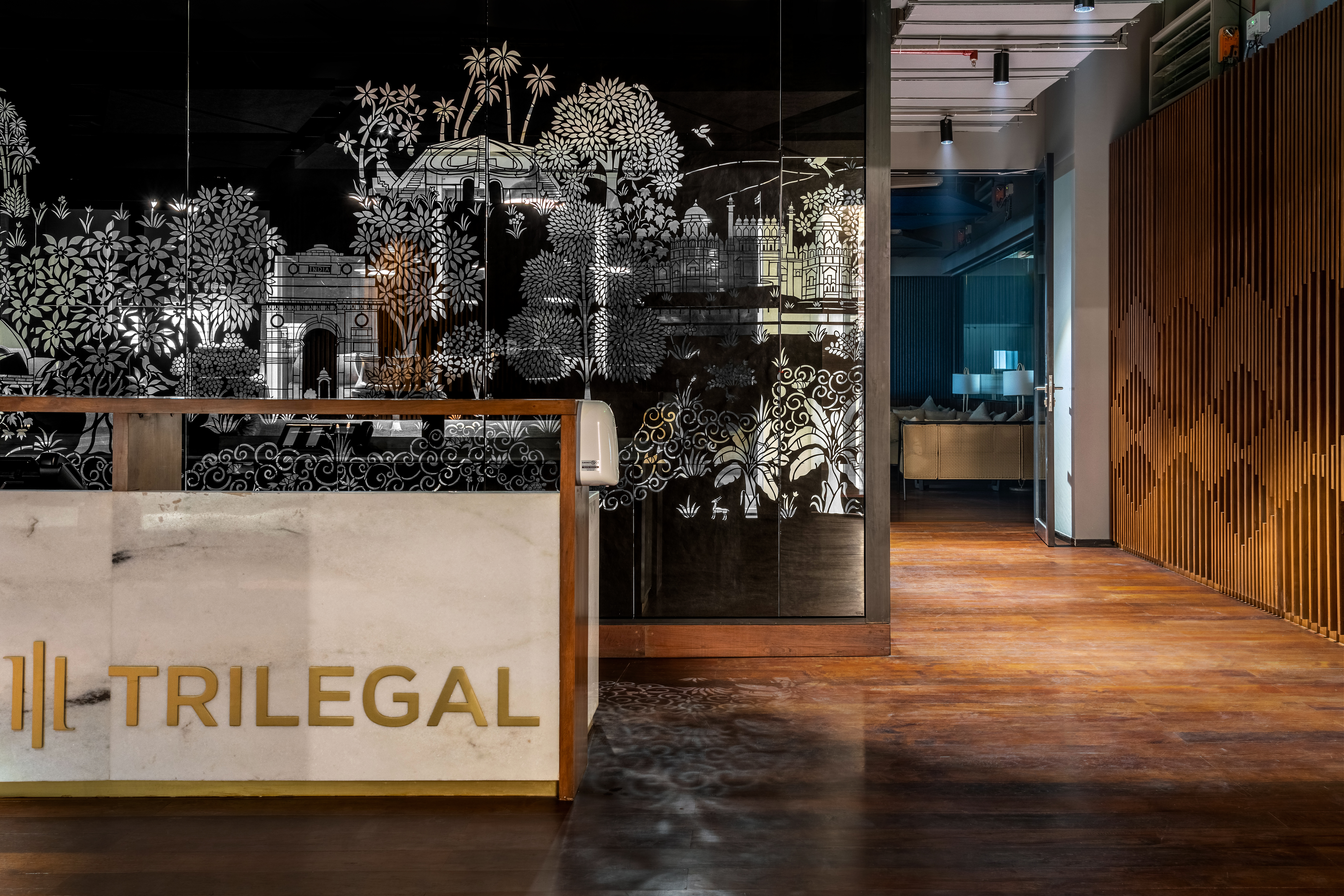| Company Details | |
|---|---|
| Company Name | Studio Lotus |
| Address | F 301, First Floor Chaudhari Prem Singh House, Himmat Singh Marg, Lado Sarai, New Delhi, Delhi 110030 Himmat Singh Marg, Lado Sarai New Delhi, Delhi 110030 India Map It |
| Name | Asha Sairam |
| Job Title | Principal |
| Email hidden; Javascript is required. | |
| Phone | 9313011503 |
| Role of this organisation in the project being entered | Interior Design |
| Category |
|
| Name of organisation entering the Awards (if different from above) | Studio Lotus |
| Role of this organisation in the project being entered (if different from above) | Interior Design |
| Project Name (written how it should appear) | Trilegal |
| Project Address | DLF Cyber park , Phase III, Udyog Vihar, Gurugram Phase III, Udyog Vihar Gurugram India Map It |
| Client Name | Akshay Jaitley |
| Designer/Architect Name | Asha Sairam |
| Contractor Name | Interior and Civil - Beyond Design, Interior - MKRAFT MEP - Dreeshti AIRTECH HVAC Contractor, PMC - TEMD |
| Project Description | Completion Date: 20th October 2020 The contemporary workplace is in a continual state of flux. Workspaces today are expected to reinforce the company culture through their planning and design vocabulary, instil a sense of belonging and well-being, and spark innovation and exchange of ideas. Known to be one of India’s leading law firms, Trilegal’s project brief for the interiors of their new office space called for creating a distinct brand identity—representative of their nationwide presence and embodying their future-forward vision. The office is designed to optimize workflows and promote collaboration, co-creation, and innovation—ideas central to Trilegal’s ethos. Spread across 19,000 sq.ft, the layout is split into two zones on either side of a communal ‘Town Hall’, a notional extension to the reception that serves as a breakout zone where employees can interact and decompress. A corridor from the reception leads visitors into the workspaces and a sequestered zone comprising shared amenities such as a cafeteria, a library, and private booths. This zone is so configured that both staff and guests can have easy access to it without disrupting the workflow of the offices. The workstations, flanking each side of the Town Hall, are configured in a segmented honeycomb formation, with pods for teams of two and four individuals. These hexagonal workstations, designed in collaboration with MKraft, enable privacy while ensuring easy collaboration and flexibility for the teams. The workstations are separated using blue and grey sound-absorbing partitions while also serving as soft boards. The partitions are equipped with a coat and a shoe rack to allow employees to move in and out of the workspace as the situation demands. In tune with the hexagonal workstations, large acoustic panels are installed to create a system of floating hexagonal ceilings, helping ascribe individual identities for every workstation and improving their acoustic performance. The placement of the larger pods near the partners’ cabins is conducive to create this intertwined system that enables better communication and coordination; the smaller work pods are peripheral in nature, serving as breakout spaces away from the main desk. Peripheral seating near the glazed wall along the south eastern exposure is punctuated with timber slats featuring abstract hexagonal shapes that complement the strong geometry of the workspace. Interspersed with planters, this linear section is designed to encourage casual banter, lunches, and light work. The partners’ desks are designed in an L-shape to enhance comfort and work efficiency. A third surface, in the form of a circular table, has been placed for in-person meetings. Further, each cabin is equipped with adequate overhead storage, a soft board and a whiteboard to create a clutter-free workspace, which is crucial for legal practitioners. Privacy is retained using double glazed panels with hexagonal stickers, maintaining acoustic privacy between the cabins. Trilegal’s new office seeks to demonstrate how a narrative of Indian crafts can create a memorable workspace experience for the staff and visitors alike. Diverse arts and crafts traditions from all over India are brought together in collaboration with artisans commissioned by Jaya Jaitly of Dastkari Haat Samiti to create distinct spatial identities for the interiors. These include: Sanjhi—a paper cutting art form usually depicting Hindu mythology with origins in the Indian state of Uttar Pradesh—is reinterpreted to showcase Delhi’s landmarks and biodiversity. Godna (an age-old tattoo art from North and Central India) that depicts jungle lore on the mustard surfaces of one of the meeting rooms. The Gond paintings that trace their provenance to the Gond artists of Central India illustrate the interiors of a meeting room. True to their age-old storytelling traditions, recurrent motifs of tribal art—animals and birds, rivers, flowering trees, etc.—are hand-painted on the walls. The board room employs a wall-hung metal installation, featuring the state of Chhattisgarh’s famed Bastar craft, among the oldest of artisanal traditions existing in India. Depicting the cultural practices, musical instruments, and fauna of the region, three metal panels handcrafted by award-winning artist Tiju Ram Vishwakarma complement the blue cement board walls. |
| Materials Used | 1. In the reception area, Sanjhi craft is reinterpreted by scaling it and using black paper instead of traditional white sheets before sandwiching the intricate paper cuts between glass panels to form a backdrop for the reception. 2. The corridor features spun mild steel dome lamps embellished with papier-mâché-style hand paintings by Kashmiri artist Hakim Gulam Mohammad. 3. The boardroom with blue fibre cement board-walls features a wall-hung installation depicting Chhattisgarh’s Bastar iron craft, developed using scrap iron. 4. In one of the meeting rooms, Gond paintings evoke the imagery of a forest on green coloured cement board walls. Painted by artist Dilip Shyam, Gond’s uniqueness lies in the signature dots and small strokes that build up in geometric textures within an animistic belief system. 5. In another meeting room, mustard-stained cement board walls feature 6. A hand-painted mural inspired by the historical Mughal miniature-style paintings form the backdrop to the cafeteria. Other crafts include Pattachitra (folk art form of scroll painting) paintings from the eastern state of Odisha and Warli paintings, a form of tribal art from the state of Maharashtra. The Ikat handloom craft and Shibori fabric art embellish the rear walls of the phone booths. Handcrafted brass sinks with intricate floral engravings by designer Ayush Kasliwal sit within the bathroom, drawing attention to the tiniest details that underpin the overall design intent. |
| Sustainability | An agency, Smarter Dharma ensured that each material used generated the smallest carbon footprint possible—from the construction materials to the fabric of the blinds. The goal was to reduce the project’s carbon footprint during construction as well as operationally for the long term. India has a vast repository of artisanal skills that have been nurtured over generations. The design for the office celebrates and promotes these artisanal skill sets through an approach of ‘Contemporizing Craft’, a key pursuit towards making traditional wisdom, age-old skills as well as obscure indigenous crafts relevant for our lives today through meaningful patronage and context-sensitive applications. The craft narrative is executed in partnership with Mrs. Jaya Jaitly’s team of craftspeople at Dastkari Haat Samiti, a national association of Indian artisans working towards raising their socio-economic status. Spatial experiences within the Trilegal office are shaped through impactful storytelling gestures. These interventions revive and promote regional art forms and honour and support crafts communities and their livelihoods. Especially during a period when local artisans were severely impacted by the COVID crisis, the design intervention for Trilegal seeks to demonstrate how architects, designers and other stakeholders can find meaningful ways to engage craftspeople and offer them an opportunity to thrive. How an office is structured and operated can have a direct consequence on organizational culture. The future of work in a post-Covid reality also entails creating a safe work environment resilient to shocks like the pandemic. The layout of the office for Trilegal combines the possibility of easy collaboration offered by an open floor plan with enclosed pockets ensuring secure, focussed work. The honeycomb-inspired design of the workstations function as a hybrid between an open office and a cubicle, enabling focussed work as well as meaningful interaction between coworkers at a safe distance. |
| Issues Faced | While the workspaces are designed to ensure efficiency, contemporising various crafts from around the country emerged as an unexpected layer in the design process. Working in tandem with craftspeople from all over the country to bring each space to life with a narrative of Indian crafts was a challenging yet truly rewarding experience. The workstations had to be custom-engineered according to the workflows, as opposed to the standard approach of opting for pre-fabricated, modular furniture from a catalogue. |
| Additional Comments | Addressing functional requirements is the foremost design consideration for our projects; aesthetic beauty is a natural consequence of an attempt to design sensitively. Our natural resources are limited, and as designers, we must collectively work with environmentally compliant materials. It is crucial to make the ideal material choices; we used natural and locally-sourced Acacia wood for all the furniture and millwork for Trilegal, as opposed to imported materials carrying considerable embodied energy. It is also essential to study specifications provided by suppliers to determine the embodied energy and environmental footprint of the material(s), and make an informed decision accordingly. |
| Video Link | youtu.be |
| Supporting Images |





